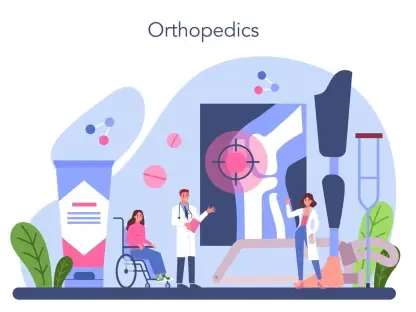In the heart of Japan’s regional communities, a staggering statistic looms over the healthcare sector: nearly 70% of hospitals operate at a deficit, grappling with staff shortages and convoluted medical fee systems, which create significant operational challenges. This crisis is particularly acute in places like Iki City, Nagasaki Prefecture, where local facilities struggle to maintain financial viability while delivering essential care. Amid this backdrop, Fujitsu has emerged with a transformative solution, deploying an AI-driven hospital management system that promises to reshape the operational landscape. This report delves into how this innovation is tackling systemic challenges, enhancing sustainability, and setting a precedent for the future of healthcare in Japan.
The State of Healthcare in Japan and the Role of Technology
Japan’s healthcare system faces profound difficulties, especially in regional areas such as Iki City, where hospitals contend with persistent deficits. These financial struggles stem from a combination of inadequate staffing, overwhelming workloads, and intricate medical fee structures that often result in revenue losses due to non-compliance. The burden of managing limited resources while meeting patient needs has pushed many facilities to the brink, threatening the accessibility of medical services in less urbanized regions.
Technology has become a beacon of hope in addressing these systemic issues, with digital transformation and artificial intelligence leading the charge toward operational efficiency. By automating administrative tasks and optimizing resource allocation, tech solutions are helping to alleviate the strain on healthcare providers. The adoption of such innovations is no longer optional but essential for ensuring the sustainability of medical institutions in challenging environments.
Major players like Fujitsu are at the forefront of this shift, leveraging their expertise to develop cutting-edge tools that tackle longstanding problems. Their focus on data-driven approaches offers a pathway to financial stability and improved care delivery. Given that regional healthcare challenges mirror broader national concerns, initiatives in areas like Iki City hold significant implications for Japan’s entire medical landscape, potentially serving as models for widespread reform.
Fujitsu’s AI-Driven Initiative in Iki City
Key Features and Innovations of the Hospital Management Solution
Fujitsu, in partnership with Social Medical Corporation Genshukai, has introduced a groundbreaking hospital management solution powered by the Data Intelligence PaaS platform. This system integrates vast amounts of medical data from disparate sources, such as electronic health records and billing systems, into a cohesive, accessible format. By harnessing AI, it enables data-driven decision-making to address critical issues like medical fee repayments and bed utilization inefficiencies.
The solution stands out for its compatibility with both Fujitsu and third-party systems, ensuring flexibility across various healthcare settings. Its user-friendly interface simplifies complex data analysis, empowering hospital staff to make informed choices without extensive technical training. Additionally, AI models provide actionable insights, such as identifying compliance risks and suggesting operational improvements, thereby reducing administrative burdens.
Market drivers fueling this innovation include the pressing need for sustainable healthcare models and the potential for scalability. As regional hospitals face increasing pressure to remain viable, solutions that enhance profitability while maintaining care quality are in high demand. Fujitsu’s platform not only addresses immediate needs but also lays the groundwork for broader adoption, positioning it as a transformative force in the industry.
Pilot Project Outcomes and Growth Metrics
A pilot project conducted from July to September this year at Genshukai facilities, including Mitsutake Hospital in Iki City, has yielded promising results. The initiative focused on optimizing key operational areas, demonstrating the tangible benefits of AI integration. Early data indicates significant improvements in both financial performance and resource management, setting a strong foundation for future expansion.
Key performance indicators from the pilot highlight a projected 10% annual revenue growth for Genshukai, driven by enhanced compliance with facility standards and a rise in bed occupancy rates from 70% to 90%. These metrics reflect the solution’s effectiveness in tackling revenue losses and maximizing the use of available resources, directly impacting the hospital’s bottom line and capacity to serve patients.
Looking ahead, Fujitsu aims for nationwide deployment by the end of 2026, building on the pilot’s success. The potential for improved financial stability and better patient care delivery in regional settings is substantial, with forward-looking projections suggesting that widespread adoption could redefine healthcare management. This initiative underscores a scalable model that could benefit countless facilities facing similar challenges across Japan.
Challenges in Implementing AI Solutions in Regional Healthcare
The deployment of Fujitsu’s AI solution in Iki City has not been without hurdles, particularly in integrating new technology with existing systems. Many regional hospitals rely on outdated infrastructure, making seamless adoption a complex endeavor. Compatibility issues and the need for system upgrades often pose significant barriers to implementation.
Staff adaptation to these advanced tools presents another challenge, as healthcare workers must adjust to unfamiliar processes while maintaining patient care standards. Additionally, market-driven obstacles, such as the high initial costs of implementation and the requirement for ongoing updates to meet evolving medical regulations, add layers of difficulty to the rollout. These financial and logistical concerns can deter smaller facilities from embracing such innovations.
To mitigate these issues, strategies like comprehensive training programs for staff and phased implementation plans are essential. Gradual integration helps minimize disruption, while continuous support ensures compliance with changing standards. Addressing broader complexities, such as safeguarding data privacy and balancing automation with human interaction, remains critical to gaining trust and ensuring the technology complements rather than overshadows the caregiving process.
Regulatory and Compliance Landscape in Japanese Healthcare
Japan’s healthcare sector operates under a stringent regulatory framework, particularly concerning medical fee systems and facility standards that directly influence hospital revenue. Non-compliance with these guidelines often results in repayments, exacerbating financial strain. Navigating this landscape requires meticulous attention to detail and robust monitoring mechanisms.
Fujitsu’s solution addresses compliance needs by digitalizing key metrics, such as staffing ratios and patient return rates, through real-time tracking and AI-generated recommendations. This approach reduces the risk of penalties and eases the administrative load on hospital personnel. By aligning with national standards, the platform ensures that facilities can focus on care delivery without constant regulatory oversight concerns.
Data security and privacy are paramount in this context, as AI systems handle sensitive patient information. Adhering to strict national guidelines fosters trust among stakeholders and supports broader scalability. As regulatory requirements evolve, the adaptability of such solutions will be crucial in maintaining compliance across diverse regions and facilities, paving the way for sustained impact.
Future Prospects for AI in Healthcare Transformation
The trajectory of AI-driven healthcare solutions in Japan points to a dynamic future, with emerging technologies poised to further disrupt traditional models. Innovations in data analytics and machine learning are expected to refine operational efficiencies, offering new ways to address persistent challenges. The market is ripe for such advancements, as both providers and consumers increasingly prioritize sustainable, technology-supported care.
Consumer and provider preferences are shifting toward human-centric healthcare bolstered by digital tools, emphasizing the need for solutions that enhance rather than replace personal interaction. Fujitsu’s initiative aligns with this trend, aiming to expand to additional Genshukai facilities and eventually to medical institutions nationwide by 2026. This growth trajectory reflects a broader movement toward integrating technology with empathy in medical settings.
Several factors will influence this evolution, including ongoing innovation, global economic conditions, and alignment with Sustainable Development Goals for healthcare sustainability. As investment in AI continues to grow, opportunities for addressing disparities in under-resourced areas will expand. The potential for such technologies to bridge gaps in care delivery makes them a cornerstone of future healthcare transformation in Japan and beyond.
Conclusion and Recommendations for Healthcare Innovation
Reflecting on the journey of Fujitsu’s pilot project in Iki City, the remarkable strides made in enhancing regional healthcare sustainability stand out as a beacon of progress. The initiative demonstrated that AI and data integration could significantly bolster financial stability and patient care in challenging environments. This success underscores the transformative power of technology when tailored to specific systemic issues.
Moving forward, stakeholders should prioritize strategic investments in AI solutions to support under-resourced regions, ensuring that financial constraints do not hinder adoption. Collaborative efforts between technology firms and healthcare providers must deepen, fostering innovation through shared expertise and resources. Establishing robust training frameworks will be vital to equip staff with the skills needed to leverage these tools effectively.
Additionally, policymakers and industry leaders should consider incentivizing the integration of such technologies through funding and regulatory support, creating an ecosystem where innovation thrives. By focusing on scalability and data security, future initiatives can build on this foundation, ensuring that technology continues to serve as a trusted partner in healthcare. These steps promise to drive long-term growth and equity in medical services across diverse communities.









